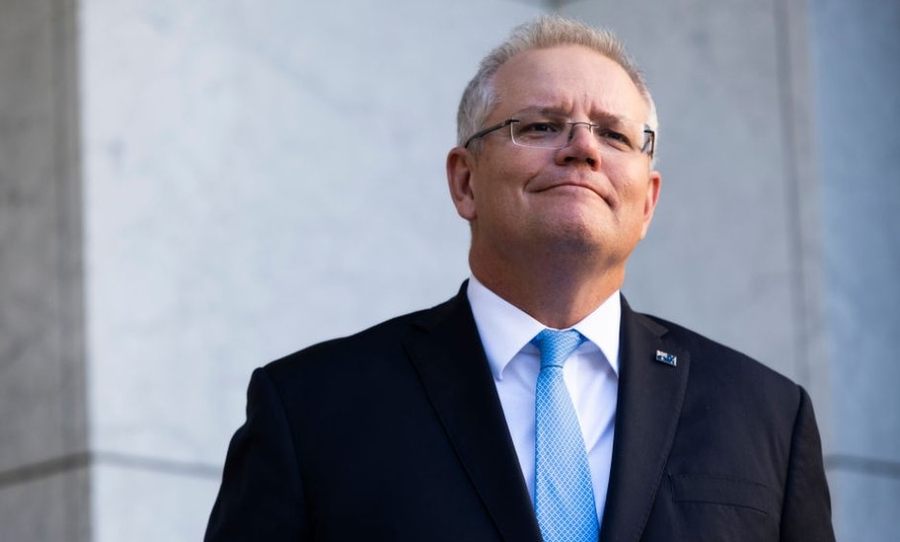The Morrison Government is pushing ahead with their cuts to the JobKeeper and JobSeeker welfare payments amidst the continuing global pandemic.
The Federal government will be cutting back both the JobKeeper and JobSeeker payments on the 28th and 25th of September, respectively. There is fear amongst the Australian public that as this much-needed support is slowly stripped back, we will begin to feel the real economic pain of the pandemic.
When COVID-19 first hit the country in late March, queues for Centrelink lined the block and call centres became impossible to get a hold of as predictions revealed that as many as 3.4 million people could soon become unemployed. Over the past six months, the government has spent $70 billion supporting its citizens and helping them in this time of crisis, but now payments are about to be drastically cut.

Earlier this year, the Morrison Government introduced the JobKeeper payment, providing up to $750 to employees per week, as well as the JobSeeker stimulus, which doubled recipients’ fortnightly unemployment earnings. In two days these figures will be slashed, with JobKeeper reduced to $600 a week at most and JobSeeker reduced by $250-$300 per fortnight.
Prime Minister Scott Morrison has backed the controversial decision to cut the coronavirus welfare payments, stating on ABC’s Insiders that he expects that “hundreds of thousands” of jobs will return before Christmas.
“JobKeeper has played, with JobSeeker, an incredibly important role in keeping people in positions…We always said it was not something that would be around forever,” he described.
The revised JobSeeker payment will permit recipients to earn $300 a fortnight before facing a reduction in their Government payment. However, this week Australian Council of Social Service chief executive Dr Cassandra Goldie voiced that the money cuts would be “devastating” to unemployed people facing an uncertain future. “There are 12 people receiving JobSeeker for every job vacancy and 28 people for every vacancy in regional areas,” she said.
“If there is a job to be taken and a job that is being offered, then it is an obligation, a mutual obligation, for those who are on JobSeeker to take those jobs where they’re on offer,” Morrison said.
Jim Chalmers, treasury spokesman of the Labour party voiced that the decision to slash the wage subsidy next week was a clear mistake, highlighting that this payment cut could not have come at a worse time for our economy.
Next Monday, 1,224,598 NSW workers will have their JobKeeper payments cut. In the middle of this jobs crisis, why is Morrison pulling support back without a jobs plan to replace it? #auspol pic.twitter.com/YOvh38Ppuj
— Jim Chalmers MP (@JEChalmers) September 22, 2020
Sigh, guess I’m making that Onlyfans after all
— 🥔𝓜𝓪𝓼𝓱𝓮𝓭 𝓟𝓸𝓽𝓪𝓽𝓸𝓮𝓼 𝓢𝓽𝓪𝓷 𝓐𝓬𝓬 ❤️ (@TheVandelay) September 21, 2020
We can’t he just grow a pair and admit he was wrong? He’d rather watch us slide into full on depression than do what needs to be done.
— FedUp (@FedUpWithTheLot) September 21, 2020
For a more detailed breakdown of the imminent changes, read below.
JobKeeper Changes
The JobKeeper scheme has been extended until March 28. However, from next Monday, September 28, full-time employees working more than 20 hours a week will get $1200 per fortnight (compared to the previous amount of $1500) whilst part-time employees who worked less than 20 hours a week will get $750 per fortnight.
From January 4 2021 until March 28, full-time workers will then receive $1000 per fortnight and part-time will receive $650.
Businesses will need to demonstrate that their GST turnover hs declined in the September 2020 and December 2020 quarters, respectively and make a monthly declaration.
JobSeeker Changes
From Friday, September 25, the JobSeeker supplement will drop from $550 per fortnight to $250 per fortnight and will continue until December 31, 2020.
This takes the maximum fortnightly rate for singles down from $1115 to $815. Singles with children and over 60s will receive $50 per fortnight more and people in a partnership will receive $760 a fortnight total.



